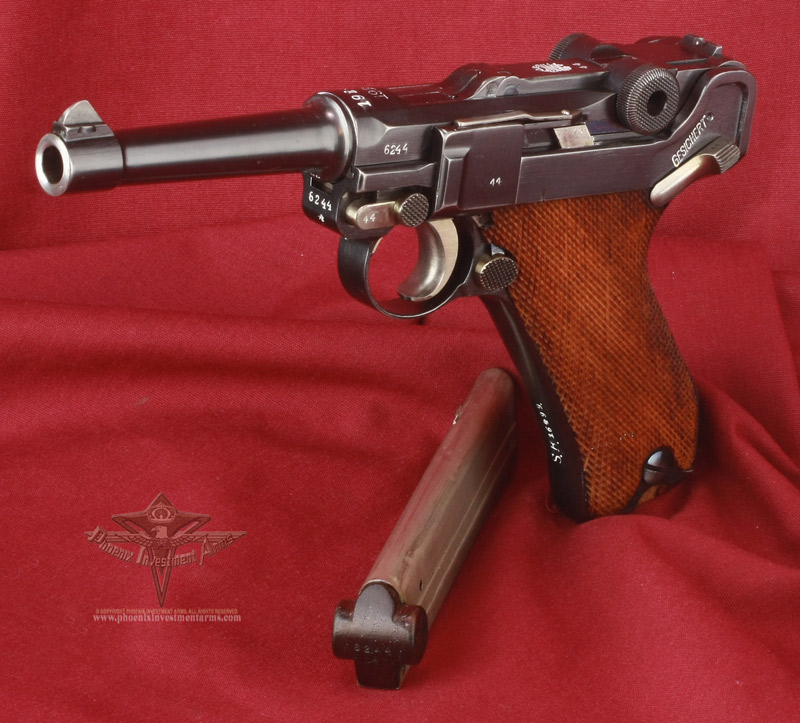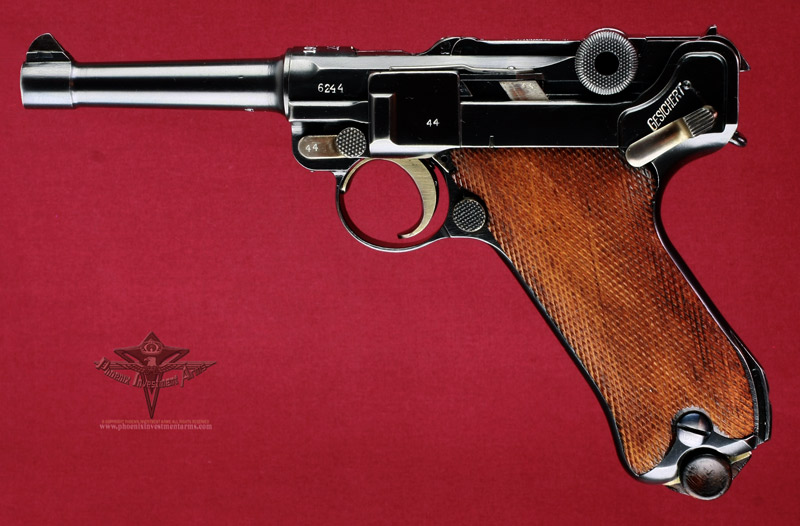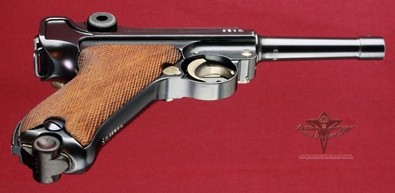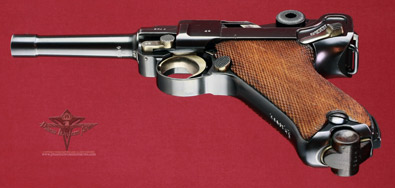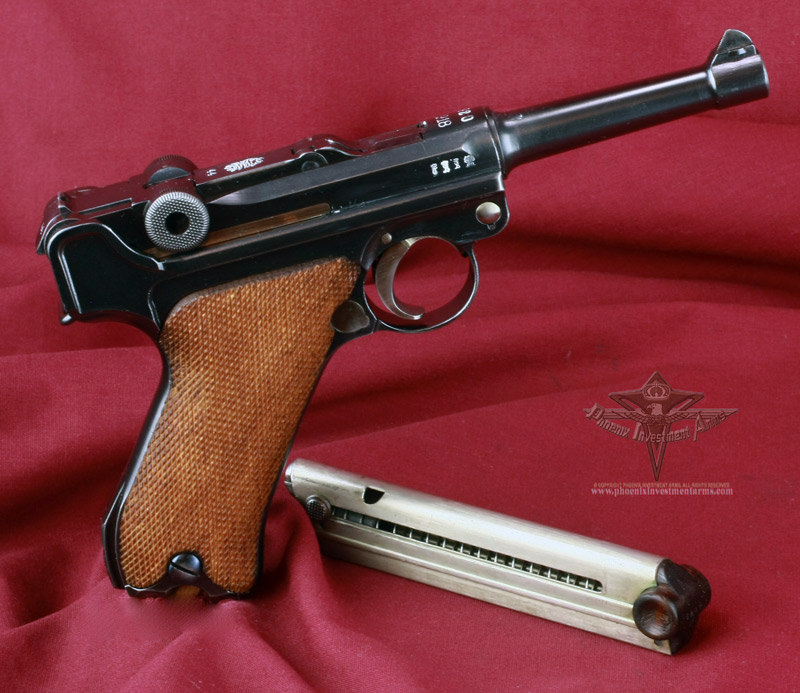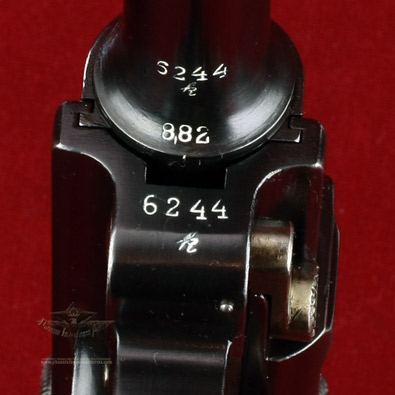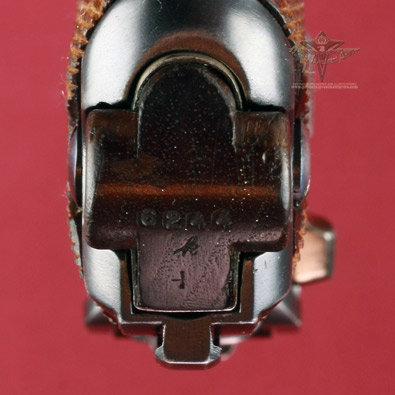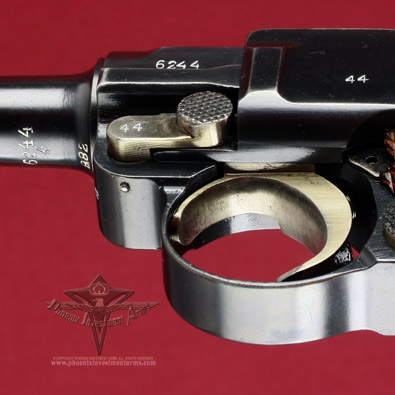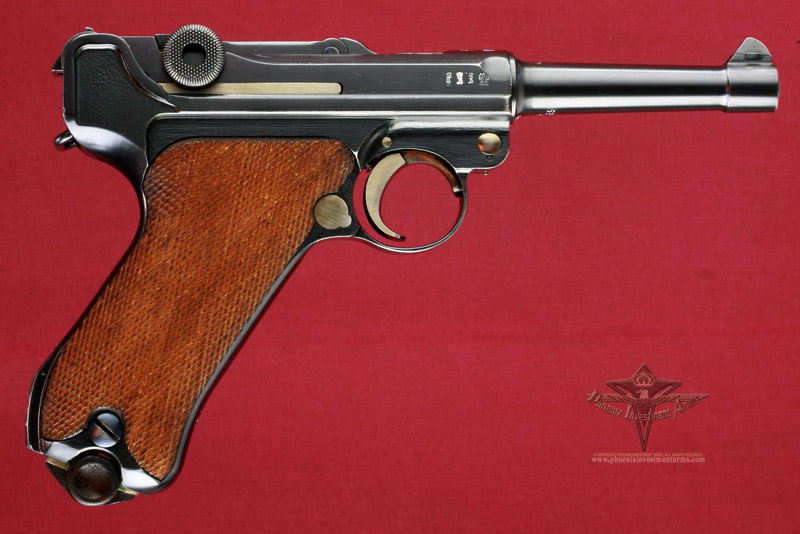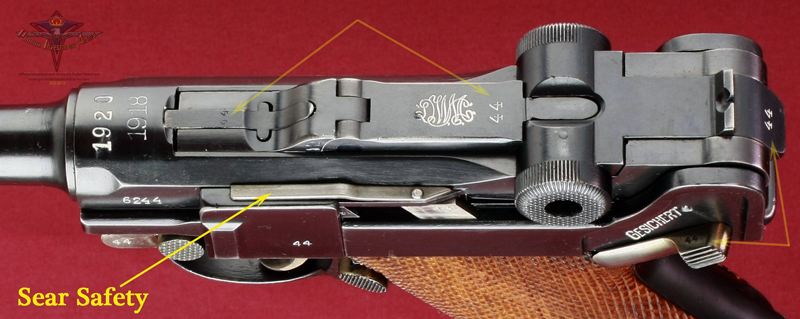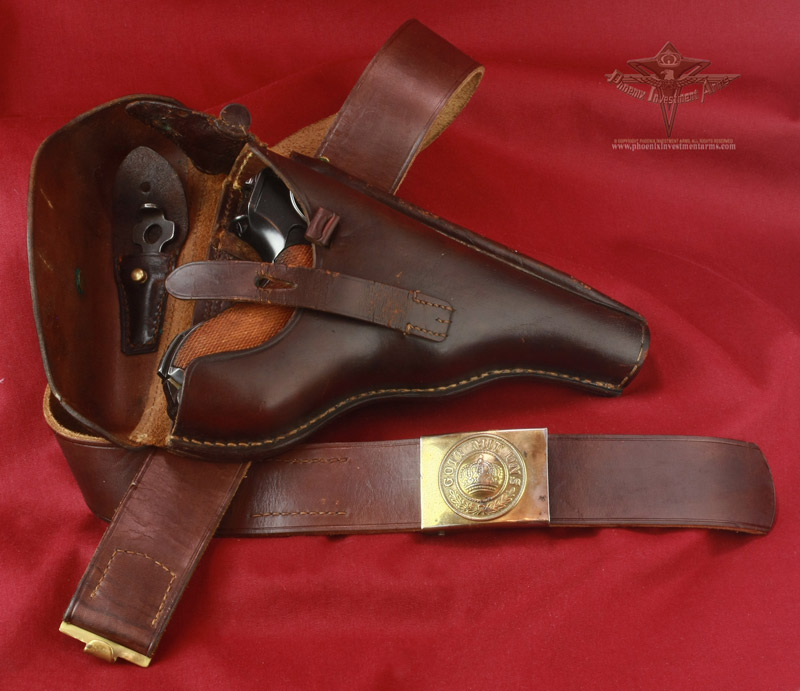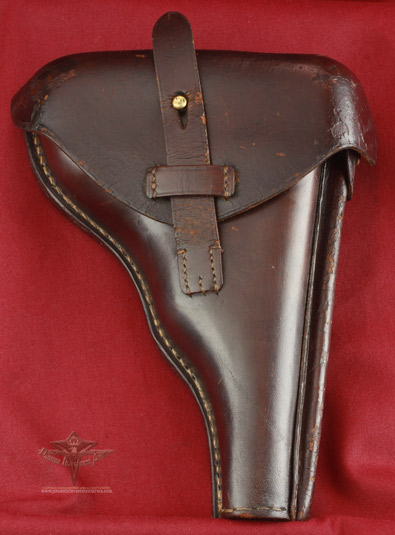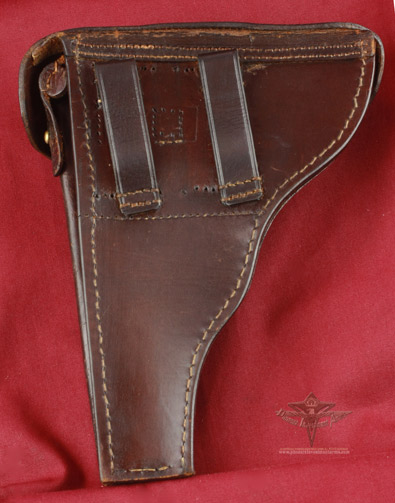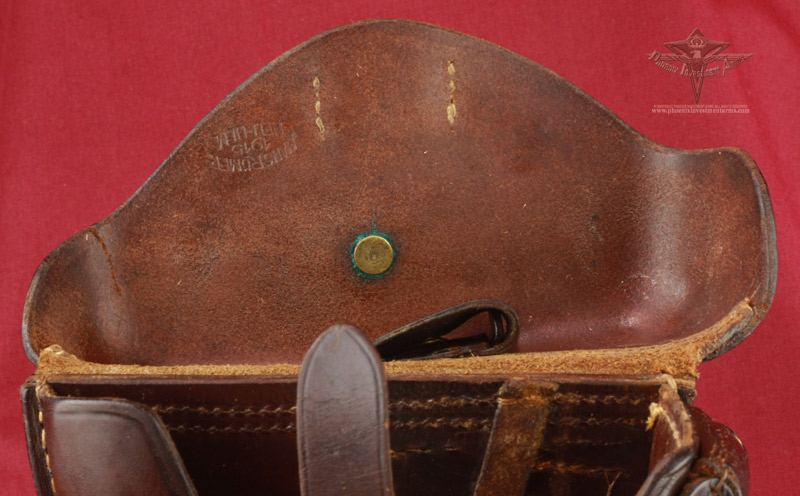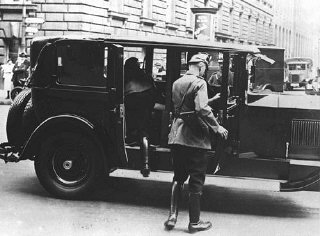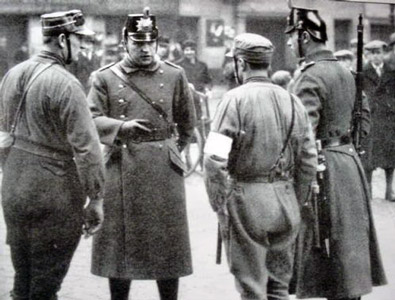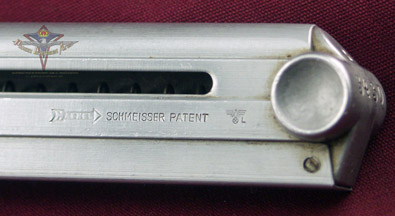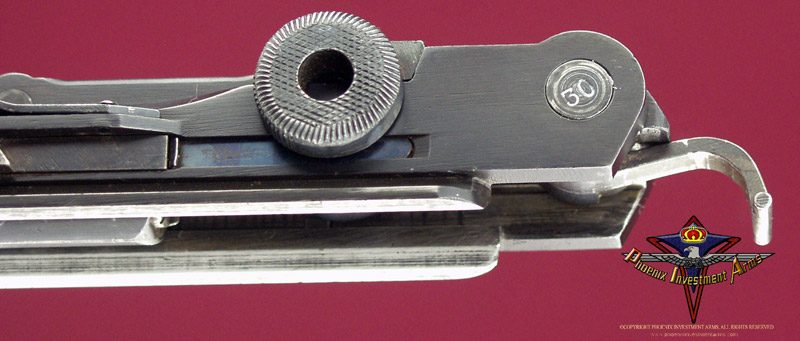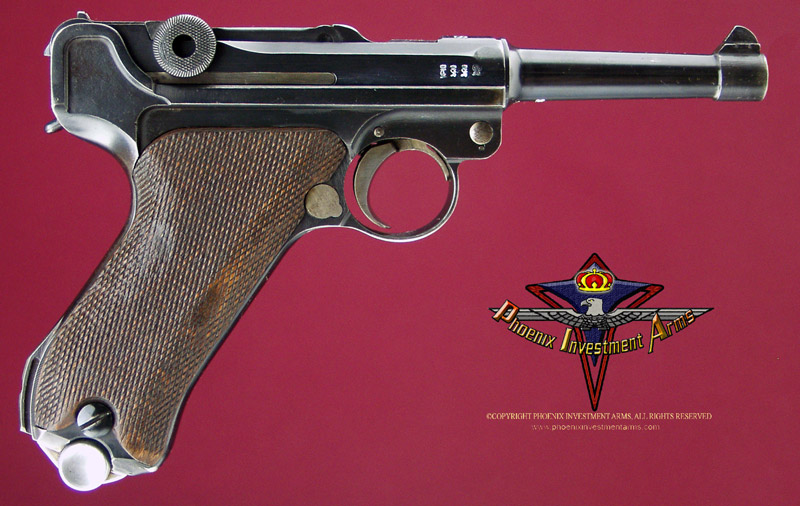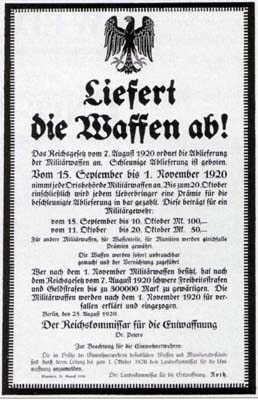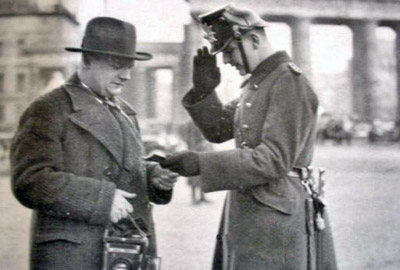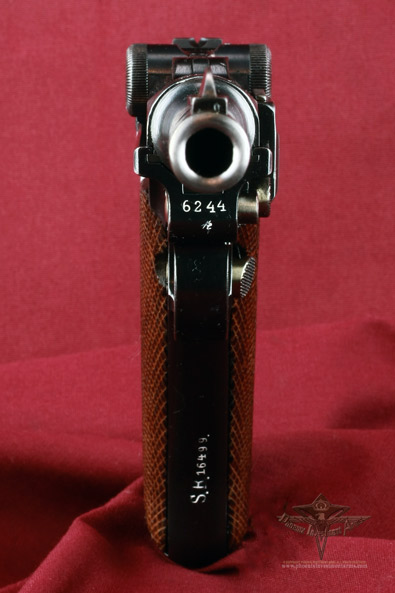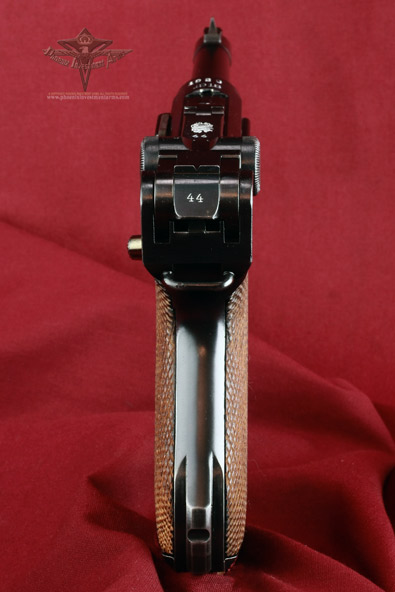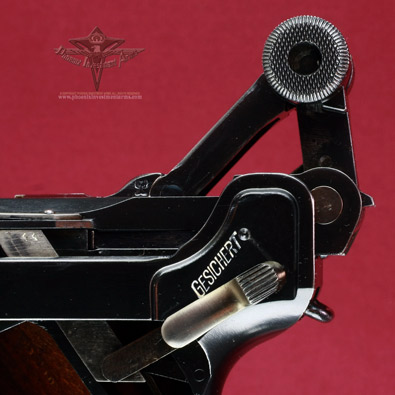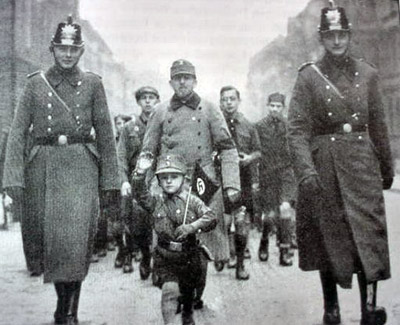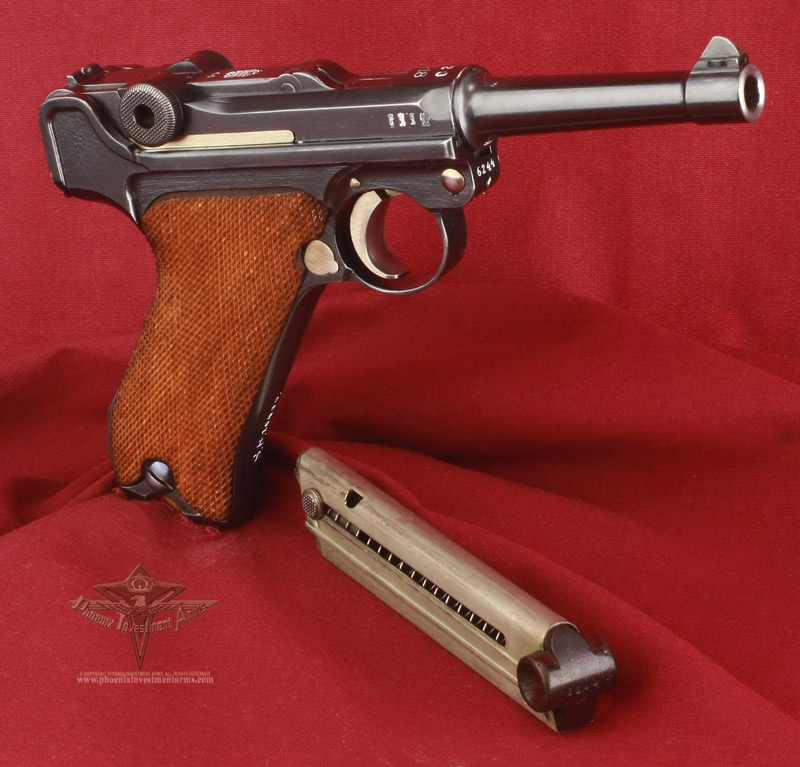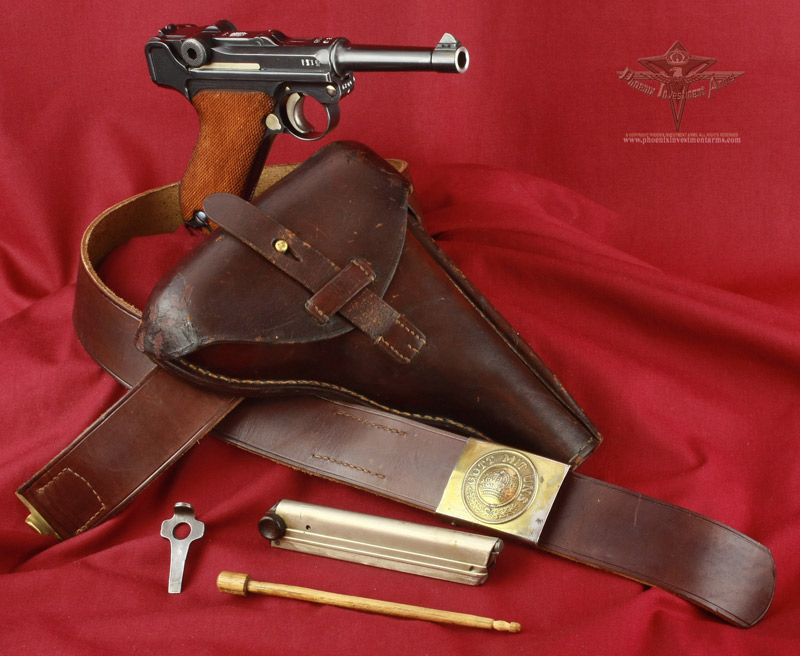1918/1920 Dated DWM LUGER
PHOENIX INVESTMENT ARMS -
PREMIUM COLLECTOR LUGERS
Genuine German
Luger - Largest Variety of Lugers Offered
Home | Post WWI DWM | Erfurt Lugers | Mauser | Simson Suhl | Krieghoff | Vickers, Ltd | Swiss Bern | Other Guns
Bottom of Page
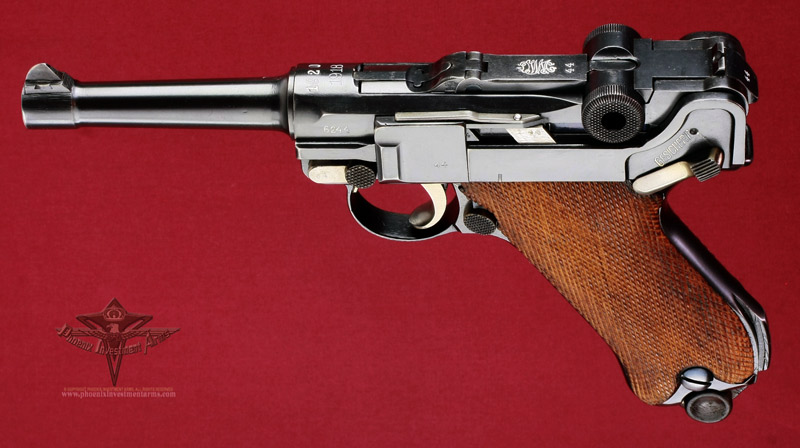 |
|
This is a beautiful example of the Model 1908 DWM (Deutsches Waffen Und Munitionsfabriken Co) Manufactured Pistole-08. The chamber marking represent the military contract year of production and this example is a 1918 dated Luger. The frame tells us that it was an artillery (200mm barrel) and has had the barrel replaced by DWM which had stockpiles of parts and repairs when the war ended. The is a 9mm, all matching police Parabellum. The DWM monogram markings appear on the 1st toggle link and the extractor is marked 'Geladen' (Loaded). This example has all matching serial numbers. The thumb safety is marked "Gesichert" and when exposed (safety down) means safe. (917) |
 |
|
NOTE: Photographs taken today with the high mega-pixel camera show more than we sometimes can see with the human eye. Magnified close-ups show us tool marks and natural surface conditions that one normally doesn't see in the ordinary handling of the weapon. Photographs are copyrighted, all rights reserved, any extraction, reproduction or display of gun pictures without the express consent of the Phoenix Investment Arms is strictly prohibited. Before your purchase please read Legal for Conditions of Sale. Thank you for your cooperation. |
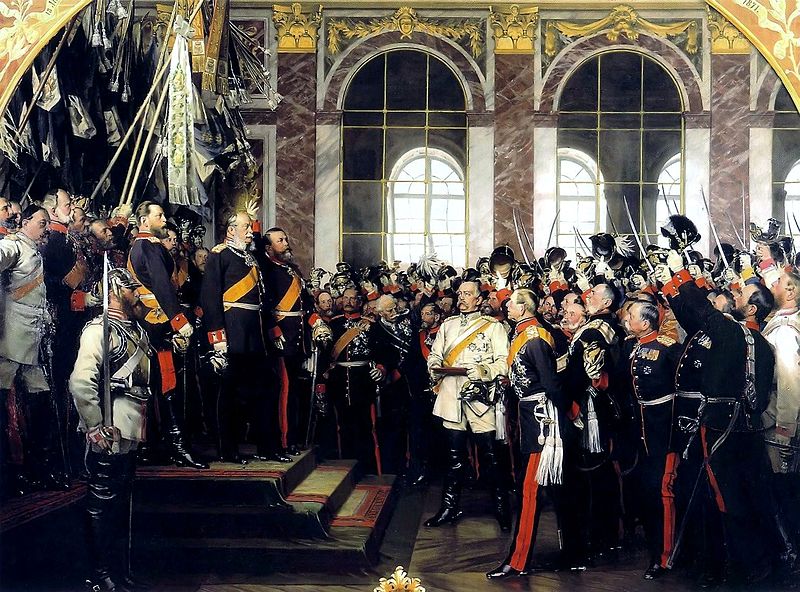 |
